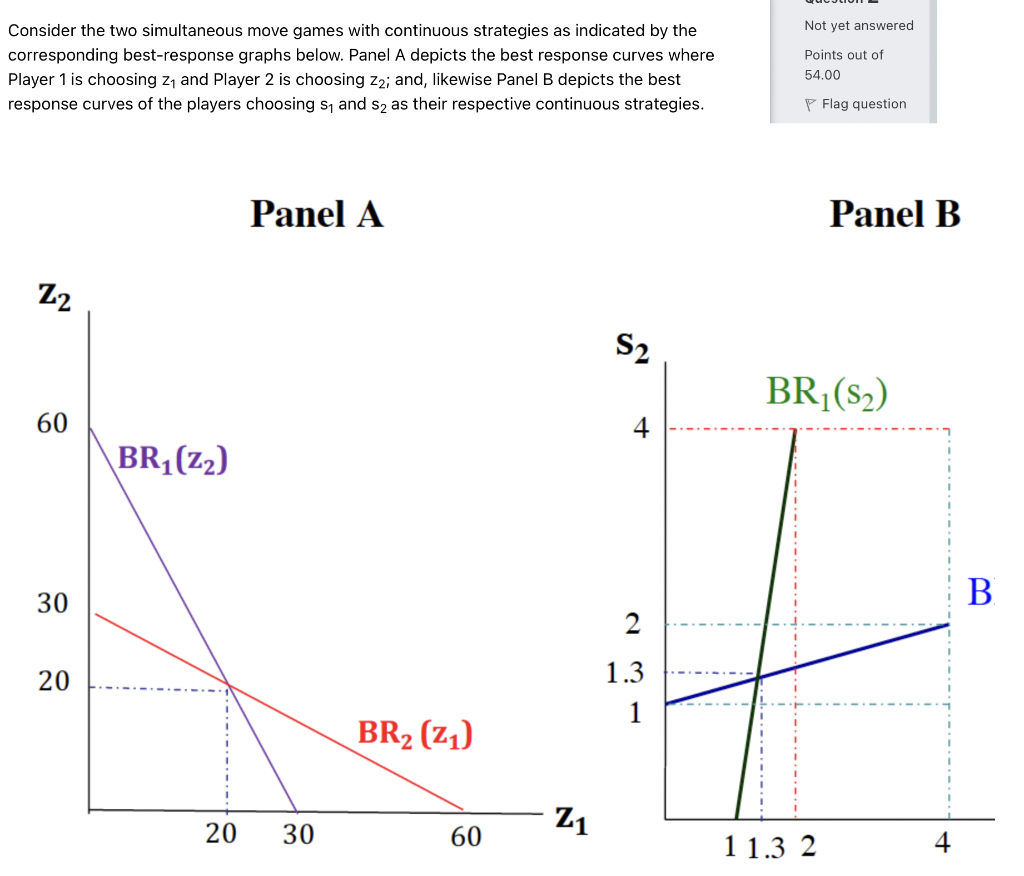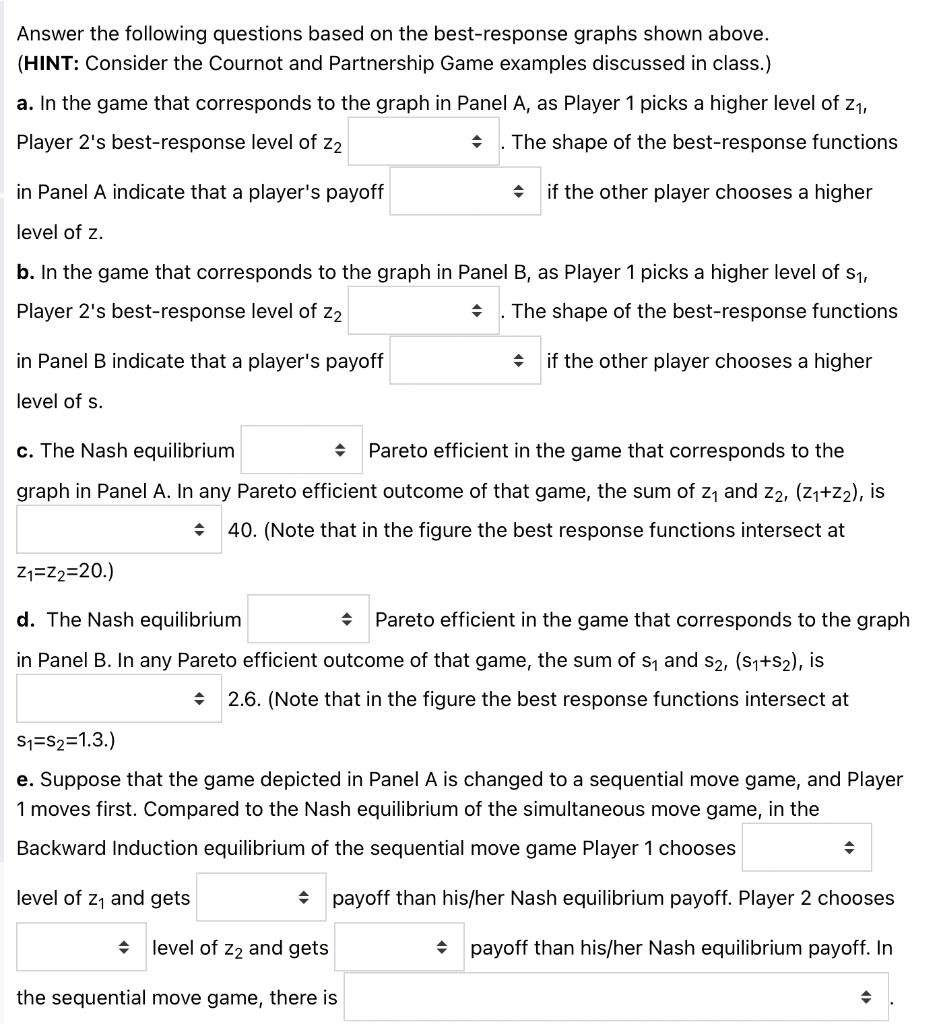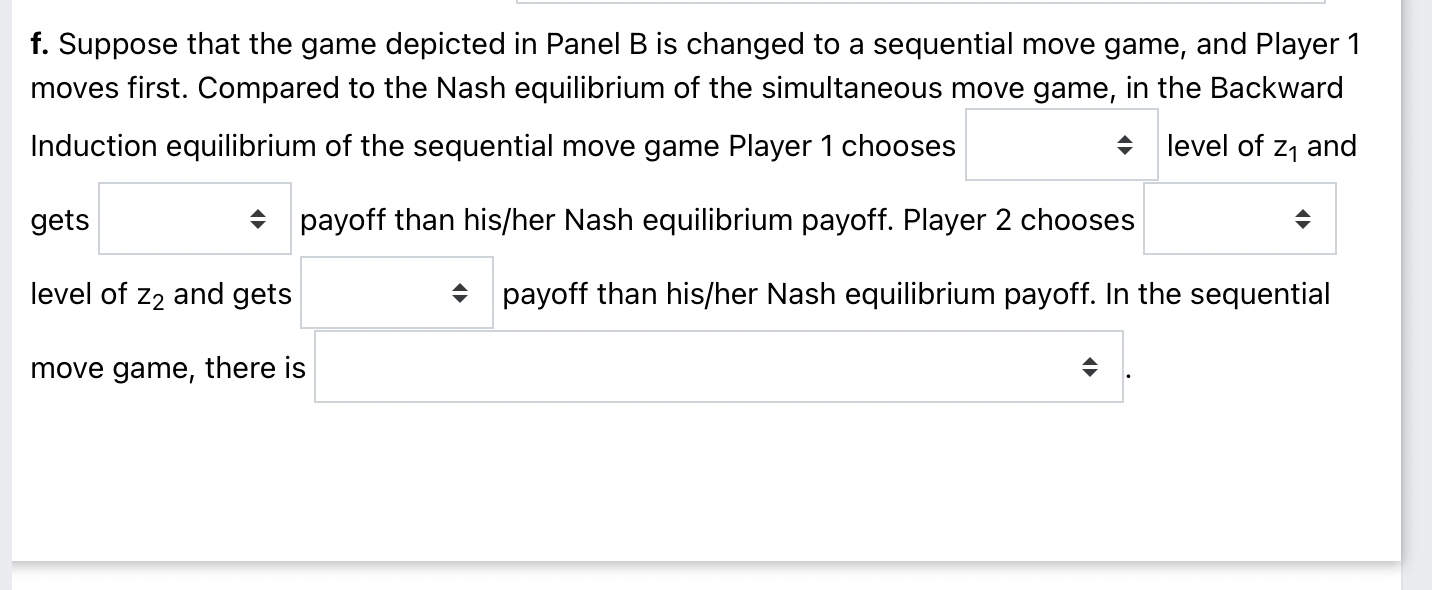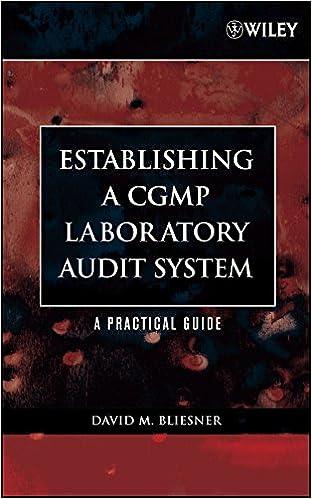


Consider the two simultaneous move games with continuous strategies as indicated by the corresponding best-response graphs below. Panel A depicts the best response curves where Player 1 is choosing z1 and Player 2 is choosing z2; and, likewise Panel B depicts the best answered response curves of the players choosing s1 and s2 as their respective continuous strategies. Panel A Panel B Answer the following questions based on the best-response graphs shown above. (HINT: Consider the Cournot and Partnership Game examples discussed in class.) a. In the game that corresponds to the graph in Panel A, as Player 1 picks a higher level of z1, Player 2's best-response level of z2. The shape of the best-response functions in Panel A indicate that a player's payoff if the other player chooses a higher level of z. b. In the game that corresponds to the graph in Panel B, as Player 1 picks a higher level of s1, Player 2's best-response level of z2 The shape of the best-response functions in Panel B indicate that a player's payoff if the other player chooses a higher level of s. c. The Nash equilibrium efficient in the game that corresponds to the graph in Panel A. In any Pareto efficient outcome of that game, the sum of z1 and z2,(z1+z2), is 40. (Note that in the figure the best response functions intersect at z1=z2=20.) d. The Nash equilibrium Pareto efficient in the game that corresponds to the graph in Panel B. In any Pareto efficient outcome of that game, the sum of s1 and s2(s1+s2), is 2.6. (Note that in the figure the best response functions intersect at s1=s2=1.3.) e. Suppose that the game depicted in Panel A is changed to a sequential move game, and Player 1 moves first. Compared to the Nash equilibrium of the simultaneous move game, in the Backward Induction equilibrium of the sequential move game Player 1 chooses level of z1 and gets payoff than his/her Nash equilibrium payoff. Player 2 chooses level of z2 and gets payoff than his/her Nash equilibrium payoff. In the sequential move game, there is f. Suppose that the game depicted in Panel B is changed to a sequential move game, and Player 1 moves first. Compared to the Nash equilibrium of the simultaneous move game, in the Backward Induction equilibrium of the sequential move game Player 1 chooses level of z1 and gets payoff than his/her Nash equilibrium payoff. Player 2 chooses level of z2 and gets payoff than his/her Nash equilibrium payoff. In the sequential move game, there is Consider the two simultaneous move games with continuous strategies as indicated by the corresponding best-response graphs below. Panel A depicts the best response curves where Player 1 is choosing z1 and Player 2 is choosing z2; and, likewise Panel B depicts the best answered response curves of the players choosing s1 and s2 as their respective continuous strategies. Panel A Panel B Answer the following questions based on the best-response graphs shown above. (HINT: Consider the Cournot and Partnership Game examples discussed in class.) a. In the game that corresponds to the graph in Panel A, as Player 1 picks a higher level of z1, Player 2's best-response level of z2. The shape of the best-response functions in Panel A indicate that a player's payoff if the other player chooses a higher level of z. b. In the game that corresponds to the graph in Panel B, as Player 1 picks a higher level of s1, Player 2's best-response level of z2 The shape of the best-response functions in Panel B indicate that a player's payoff if the other player chooses a higher level of s. c. The Nash equilibrium efficient in the game that corresponds to the graph in Panel A. In any Pareto efficient outcome of that game, the sum of z1 and z2,(z1+z2), is 40. (Note that in the figure the best response functions intersect at z1=z2=20.) d. The Nash equilibrium Pareto efficient in the game that corresponds to the graph in Panel B. In any Pareto efficient outcome of that game, the sum of s1 and s2(s1+s2), is 2.6. (Note that in the figure the best response functions intersect at s1=s2=1.3.) e. Suppose that the game depicted in Panel A is changed to a sequential move game, and Player 1 moves first. Compared to the Nash equilibrium of the simultaneous move game, in the Backward Induction equilibrium of the sequential move game Player 1 chooses level of z1 and gets payoff than his/her Nash equilibrium payoff. Player 2 chooses level of z2 and gets payoff than his/her Nash equilibrium payoff. In the sequential move game, there is f. Suppose that the game depicted in Panel B is changed to a sequential move game, and Player 1 moves first. Compared to the Nash equilibrium of the simultaneous move game, in the Backward Induction equilibrium of the sequential move game Player 1 chooses level of z1 and gets payoff than his/her Nash equilibrium payoff. Player 2 chooses level of z2 and gets payoff than his/her Nash equilibrium payoff. In the sequential move game, there is









